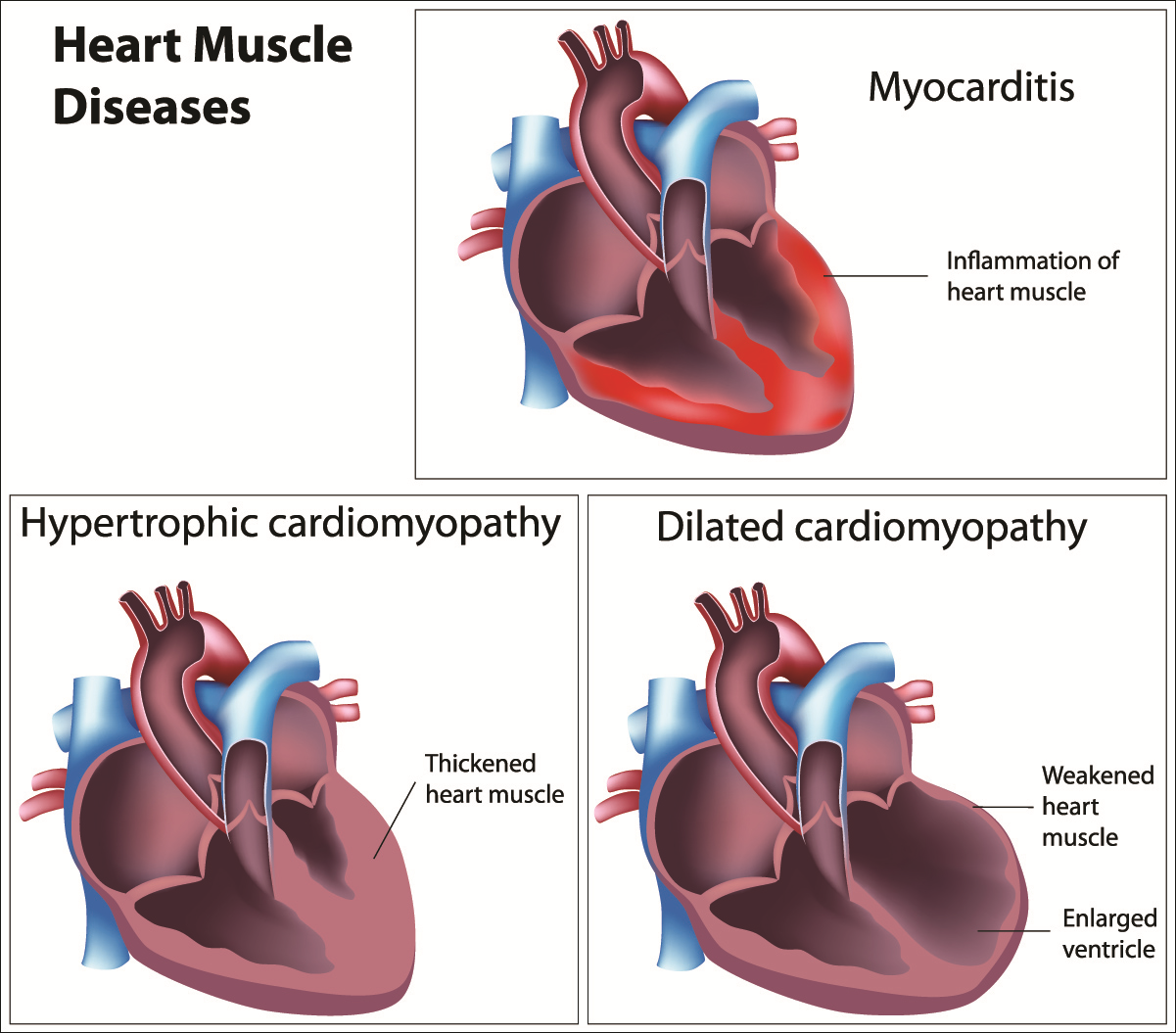Cardiomyopathy
Overview

Any disease of the heart muscle that interferes with the heart's ability to pump blood with sufficient force is called cardiomyopathy. Cardiomyopathy develops slowly and may produce no symptoms until the later stages, except when caused by viral infections. It is an uncommon disorder, accounting for only 1 percent of heart disease fatalities. But, it is one of the more common causes of serious heart disease in younger people. Coronary artery disease causes cardiomyopathy in the elderly. Treatment may include medications, implantable devices or, in severe cases, a heart transplant depending upon the type of cardiomyopathy.
There are three types of cardiomyopathies including:
- Dilated cardiomyopathy -The pumping ability of your heart's main pumping chamber — the left ventricle — becomes less forceful in this entity. It is the most common type of cardiomyopathy. There is enlargement of (dilated) left ventricle which can't effectively pump blood out of the heart. This type is most common in middle-aged people and is more likely to affect men.
- Hypertrophic cardiomyopathy -In this condition there is abnormal growth or thickening of your heart muscle, particularly affecting the muscle of your heart's main pumping chamber. This cause the heart tends to stiffen and the size of the pumping chamber may shrink, interfering with your heart's ability to deliver blood to your body. This condition becomes very severe if it becomes apparent during childhood. There is a strong family history of the disease, and some genetic alterations have been linked to this disease.
- Restrictive cardiomyopathy -In this condition, the heart muscle becomes rigid and less elastic. This means the heart can't properly expand and fill with blood between heartbeats. It is a disease of old age mostly. It is a rarest of all three types of cardiomyopathies. It can occur for no known reason (idiopathic). It is also associated with diseases elsewhere in the body that affect the heart.
Causes
Symptoms
Diagnosis
Complications
Treatment